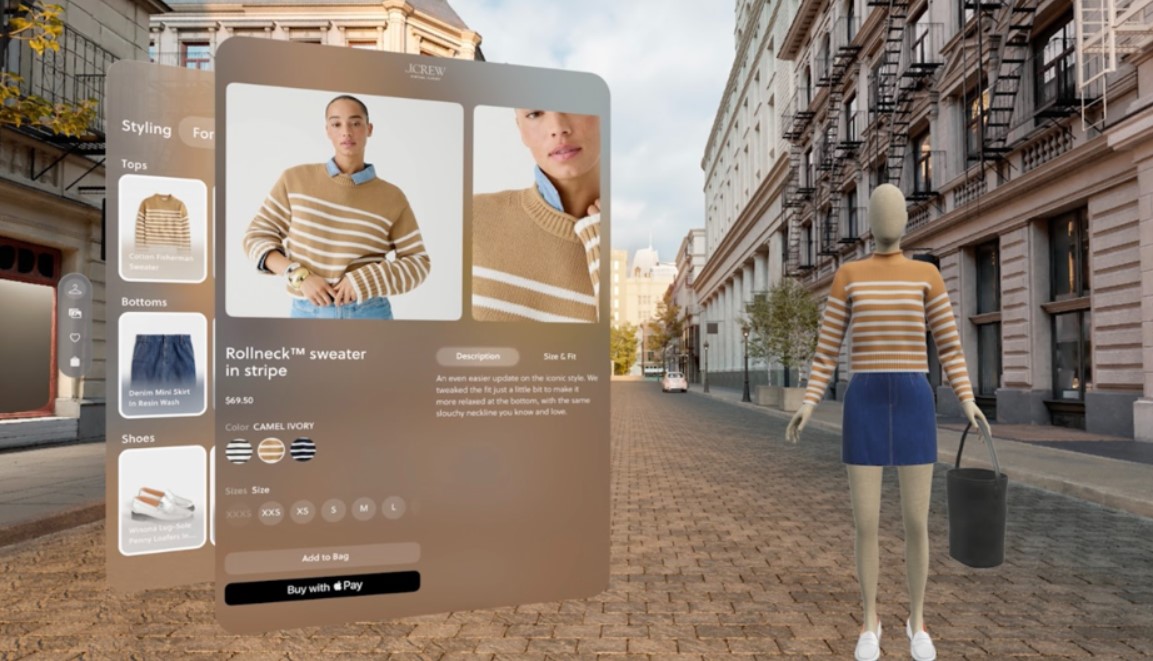In the world of commerce, retail serves as a critical link that connects manufacturers and consumers. Demystifying Retail: Your Comprehensive Guide is a resource designed to provide an in-depth understanding of the retail industry and its intricate operations. This guide aims to equip aspiring retailers and individuals interested in the retail sector with the knowledge and skills needed to succeed in this highly competitive field. It covers a broad range of topics including product selection, price setting, store management, customer service, and marketing strategies, among others.
The guide also delves into the digital side of retail, exploring e-commerce, online marketing, and the integration of technology in various retail processes. Moreover, it provides insights into the challenges faced in the retail industry and offers practical solutions to overcome them. The information contained in this guide is gleaned from industry experts and is presented in a straightforward, easy-to-understand format. Whether you’re planning to open a retail store, managing one, or simply interested in learning about the industry, Demystifying Retail: Your Comprehensive Guide is an invaluable resource that can help you navigate the complex world of retail.

Understanding Retail Sales
Understanding retail sales involves comprehending the process through which goods and services are sold to the final consumer for personal use. Retailers, whether brick-and-mortar or online establishments, are the final link in the supply chain, connecting manufacturers and wholesalers with the end consumers. The retail sales process is more than just the act of selling; it includes a wide range of activities, such as product assortment, stock management, customer service, and pricing strategies, all aimed at meeting the customers’ needs and wants.
The success of retail sales is often measured by key performance indicators (KPIs), such as sales per square foot, conversion rates, average transaction value, and customer lifetime value. These metrics help retailers analyze their performance and make informed decisions to improve sales and profitability.
Retail sales also play a significant role in the economy. They are a critical indicator of consumer spending, which accounts for a substantial part of the overall economic activity. Therefore, economists and policymakers often use retail sales data to gauge the health of the economy, consumer confidence, and spending trends.
In the rapidly evolving retail landscape, understanding consumer behavior and preferences is crucial. The rise of e-commerce has transformed the retail landscape, making it more competitive and customer-centric. Retailers are now leveraging technology, data analytics, and artificial intelligence to personalize the shopping experience and build customer loyalty.
Moreover, successful retail sales require a deep understanding of market trends, competitive dynamics, and changing consumer preferences. Retailers must continuously innovate and adapt to stay relevant and competitive. This includes offering unique products, delivering superior customer service, implementing effective marketing strategies, and creating a seamless omnichannel customer experience.
In conclusion, understanding retail sales is not just about knowing how to sell a product. It requires a holistic view of the retail business, including supply chain management, customer relationship management, marketing, and data analytics. It also involves staying abreast of industry trends, technological advancements, and evolving consumer behaviors.
Defining Retail Stores
Retail stores are commercial establishments that primarily engage in the selling of merchandise to the end consumer for personal, non-business use. These stores represent the final stage in the distribution process, where the products pass from the manufacturer or wholesaler into the hands of the customers. Their primary function is to ensure that the right kinds of products are available to the customers at the right place and at the right time. They provide a wide array of products ranging from clothing, groceries, electronics, furniture, and so on. Retail stores can be either physical brick-and-mortar stores or online e-commerce platforms.
They are categorized into several types based on their size, product range, and service. For instance, department stores offer a wide variety of products under one roof, while specialty stores focus on a specific product category. Supermarkets are large grocery stores that provide food and household items, whereas convenience stores are small shops that offer a limited range of everyday items.
Furthermore, the advent of online retailing, or e-commerce, has revolutionized the retail industry by providing customers with the convenience of shopping from anywhere, at any time. These online platforms offer a vast array of products, often at competitive prices, and deliver them to the customer’s doorstep.
Retail stores play a crucial role in the economy by contributing to GDP, providing employment opportunities, and driving consumer spending. They also play a significant role in influencing customer behavior through various marketing and promotional strategies. Retailers constantly strive to enhance customer experience, by understanding their needs and preferences, and offering a diverse range of high-quality products, excellent customer service, and a convenient shopping environment.

Diverse Types of Retail
Retail is a sprawling sector that encompasses a spectrum of diverse types. From brick and mortar stores to e-commerce platforms, there are a multitude of retail formats designed to suit different consumer needs and preferences. Traditional physical stores include department stores, supermarkets, convenience stores, and specialty stores. Each of these has a distinct approach to selling products. For instance, department stores offer a wide variety of products under one roof, while specialty stores focus on a specific category of goods.
E-commerce, a newer retail type, has seen a surge in popularity due to the convenience it offers. Consumers can browse items from the comfort of their home, compare prices across different platforms, and have their purchases delivered directly to their doorstep. There are also multi-channel retailers that combine physical stores with online platforms to give customers a seamless shopping experience.
There are also discount stores which offer products at lower prices, catering to budget-conscious consumers. These stores often offer a wide range of products, from groceries to household items, at discounted prices. On the other hand, luxury retailers focus on offering high-end, exclusive products and services to cater to affluent consumers who prioritize quality and exclusivity over price.
Retailers can also be categorized based on the ownership model. For example, chain stores are retail outlets that share a brand and central management, usually offering similar merchandise at each location. Franchise stores, on the other hand, are individually owned but operate under a larger parent company’s brand and guidance.
Finally, there are direct-to-consumer brands, a relatively new trend in retail. These brands bypass traditional retail channels to sell their products directly to consumers, often via online platforms. This model allows brands to control the entire customer experience, from production to purchase, and often results in cost savings for the consumer.
In conclusion, the retail landscape is diverse and dynamic, offering a range of options to suit different consumer needs, preferences, and budget considerations.
Indie Retailers
Indie retailers, also known as independent retailers, are those businesses that are owned and operated by individuals or families, in contrast to large corporations or chain stores. These entities play a crucial role in the commercial landscape, particularly in local economies. They often provide a diverse range of unique products and personalized customer service, which often sets them apart from their mainstream counterparts. Moreover, they contribute to the distinct identity of a neighborhood, enhancing its cultural and economic vibrancy.
Indie retailers also have a significant impact on the job market. They tend to hire locally, bolstering employment rates within their communities. Despite their relatively small size, their collective employment contribution is substantial.
However, the business environment for indie retailers can be challenging, especially in the face of stiff competition from large corporations and online retailers. These challenges can include high operating costs, difficulty in securing funding, and the lack of economies of scale. Yet, with unique offerings, personalized service, and building strong relationships within their communities, they are able to carve out a niche for themselves.
In light of the COVID-19 pandemic, indie retailers have shown remarkable resilience. They have quickly adapted to changing consumer behaviors and expectations, pivoted to online platforms, and introduced innovative ways to continue serving their customers. Despite the challenges, indie retailers continue to be an integral part of our economy, symbolizing the entrepreneurial spirit, innovation, and resilience.

Franchise Model
A franchise model is a business strategy that companies utilize to expand their market reach. This model involves a contractual agreement between the franchisor, the original business owner, and the franchisee, an individual or company who is granted the license to operate under the franchisor’s trade name. The franchisee pays an initial fee and ongoing royalties to the franchisor and in return, they receive the rights to operate under the franchisor’s brand, use their business system and gain access to their ongoing support. This model is beneficial for both parties involved.
The franchisor gains the ability to grow networks quickly and widely without the high cost of owning multiple outlets, while the franchisee enjoys the advantage of starting a business with a recognized brand and proven business model. It mitigates the risk associated with starting a business from scratch. Moreover, the franchisee receives initial training and ongoing support from the franchisor which can include operational aspects of the business, marketing support, and access to proprietary methods or products.
Despite these benefits, the franchise model also carries potential challenges. The franchisee has to follow the franchisor’s guidelines strictly, which may limit creativity and innovation. Additionally, poor performance by other franchisees could impact the overall reputation of the brand. Therefore, the franchise model, while offering significant opportunities for business growth and expansion, requires careful consideration and management to ensure mutual success for both franchisor and franchisee.
Dealerships
Dealerships act as a crucial link in the supply chain between manufacturers and consumers, particularly in the automotive sector. They are professionally managed retail outlets that buy products such as vehicles directly from manufacturers at a wholesale price and then sell them to customers at a retail price, thus earning a profit in the process. The price disparity is primarily due to the additional services offered by dealerships, which can include financing options, warranty services, and maintenance packages.
Traditionally, customers would visit a physical dealership to browse the inventory, ask questions, take test drives, negotiate prices, and ultimately make a purchase. However, in the digital age, many dealerships have created online platforms to enhance customer reach and convenience. Through these platforms, potential buyers can explore vehicle specifications, compare prices, request a quote, and even schedule a test drive from the comfort of their homes.
Dealerships also play an essential role in the after-sales service. They offer maintenance and repair services, which are often covered under warranty for a specific period or mileage after the purchase. Dealerships also facilitate trade-ins, where a customer can exchange their used vehicle for a new one at a reduced price.
In essence, dealerships serve as a one-stop solution for customers, providing a wide range of services from initial purchase to after-sales support. They are vital to the automotive industry and have a significant impact on a manufacturer’s sales and customer satisfaction.

Existing Stores
Existing stores, whether they are brick-and-mortar shops or online marketplaces, serve as crucial touchpoints between consumers and products. They are designed to provide a variety of commodities, ranging from everyday essentials to luxury items, which cater to different consumer demographics. Traditional physical stores offer the advantage of a tactile shopping experience where customers can see, touch, and sometimes even taste or smell products before making a purchase.
They also provide immediate gratification as customers can take home their purchases right away. On the other hand, online stores, with their vast product range and 24/7 accessibility, are perfect for customers who prioritize convenience and variety. They also offer a wealth of customer reviews and product comparisons, which can aid in informed decision-making. Both types of stores have their unique challenges. Physical stores have to contend with high operational costs, while online stores grapple with issues like order fulfillment and returns.
However, many businesses today adopt an omnichannel approach, blending the benefits of both physical and online stores. This approach allows them to broaden their reach and cater to a wider customer base, while offering a seamless and consistent shopping experience. Regardless of the platform, existing stores continue to evolve and innovate to meet the changing needs and expectations of consumers.
Network Marketing
Network marketing, often referred to as multi-level marketing (MLGood), is a business model that relies on a network of distributors to grow a business. It typically involves the selling of products or services where the income of the MLM company is derived from a non-salaried workforce selling the brand’s products or services. This workforce, the distributors, earn income based on their personal sales and the sales of the people they have recruited into the business. The distributors are the “downline” in the network, and the person who recruited them is the “upline.” Network marketing is characterized by a number of levels in the compensation plan.
The appeal of network marketing is often the promise of flexible working hours and the potential to earn a significant income. It is also attractive because it provides an opportunity for individuals to build their own businesses with a relatively low investment cost. The products sold through network marketing are often unique to the company and are not typically available in traditional retail outlets.
However, network marketing can also be challenging and not everyone who starts in this type of business will be successful. It requires a significant amount of time, effort, and dedication, as well as a knack for sales and recruitment. Often, it is those who are able to build a large and successful downline who reap the most benefits from network marketing. It is important for individuals interested in network marketing to thoroughly research the company and understand the commitment involved before deciding to participate.

Supply Chain Impact in Retail
The impact of supply chain processes in the retail sector is significant and multi-faceted. In essence, the supply chain represents the sequence of operations involving the production, handling, and distribution of goods. It plays a critical role in determining the overall efficiency, profitability, and success of a retail business. The precision of the supply chain can dictate the availability and timely delivery of products, directly influencing customer satisfaction, sales, and ultimately, the retailer’s market share.
Any disruption in the supply chain can lead to stock-outs, delays, and excess inventory, which can significantly impair a retail business’s performance. On the other hand, a well-managed and optimized supply chain can offer a competitive advantage, enabling retailers to meet customer demand swiftly and efficiently. It can also contribute to cost savings by reducing waste, improving inventory turnover, and minimizing storage needs.
In today’s globalized and digitalized world, supply chain complexity has increased, demanding more sophisticated management approaches. Retailers need to consider numerous factors such as sourcing, manufacturing, logistics, and warehousing while also considering external factors like geopolitics, climate change, and technological advancements.
Furthermore, consumer expectations have evolved, with an increasing demand for speed, convenience, and transparency. This new reality requires retailers to invest in advanced supply chain technologies and strategies, such as AI, data analytics, and sustainable practices.
In conclusion, the supply chain’s impact in retail is profound and extends beyond simple product delivery. It is a vital component of a retailer’s strategy, shaping their operations, their relationship with customers, and their position in the market. Therefore, effective supply chain management is not just a logistical necessity but a crucial business imperative in the retail sector.
Exploring Online Retail
Online retail has revolutionized the world of shopping by providing consumers with a plethora of options at their fingertips. This sector of commerce has grown exponentially over the past decade, thanks to the advances in technology and the increasing accessibility of the internet globally. Companies like Amazon, eBay, and Alibaba have become household names, offering a wide array of products and services that cater to all kinds of consumer needs.
Exploring online retail provides a unique understanding of how technology has transformed traditional shopping habits. It’s fascinating to see how e-commerce platforms utilize advanced algorithms and artificial intelligence to provide personalized shopping experiences. These technologies aid in predicting customer preferences, thereby streamlining their search and saving time. Additionally, the use of digital payment options has made transactions seamless, swift, and secure, significantly contributing to the popularity of online shopping.
The world of online retail is not just confined to large multinational corporations. Small and medium enterprises are also leveraging these platforms to reach a wider audience. Websites like Etsy are a testament to this, where small-scale artisans and crafters can sell their unique creations to customers around the world.
However, online retail also presents unique challenges. Issues such as data security, privacy concerns, and the need for effective consumer protection measures are critical. It is imperative for online retailers to address these concerns proactively to maintain consumer trust and ensure the sustainable growth of this industry.
Moreover, the environmental impact of online retail, particularly related to packaging and transportation, cannot be ignored. This brings to the forefront the need for sustainable practices within the industry.
In conclusion, exploring online retail offers an exciting insight into the future of shopping. It presents a landscape where convenience, technology, and global connectivity converge to redefine traditional shopping norms. As we continue to explore and understand this sector, it becomes clear that it is set to play an integral part in shaping the future of global commerce.

Launching Your Online Store
Starting an online store is an exciting venture for any entrepreneur. The process involves several significant steps, from brainstorming a unique concept to implementing the final touches on your e-commerce platform. Firstly, you must identify a product or service that fulfills a need within the market. Comprehensive market research will aid in this discovery process. Once you have a solid idea, the next step involves sourcing or creating your products. Depending on your business model, this could involve reaching out to manufacturers, setting up an in-house production line, or even writing eBooks or courses if your store is service-based.
The following step is designing and setting up your online store, which includes selecting an e-commerce platform that suits your needs. Options include Shopify, WooCommerce, or BigCommerce, each with their own strengths and weaknesses. Simultaneously, it’s crucial to define your brand. This includes your company name, logo, color scheme, and overall aesthetic, which should be consistent across your website and social media channels.
Next, consider the logistics of your online store. How will you handle shipping and returns? What payment methods will you accept? If you’re selling physical goods, you’ll also need to consider how to store and manage your inventory.
Lastly, no online store can succeed without a robust marketing strategy. This could involve SEO, paid advertising, content marketing, social media marketing, or a combination of these. Remember that customer service is also a form of marketing – happy customers are more likely to return and recommend your store to others.
Overall, launching an online store is a journey that requires careful planning and execution. However, with the right product, platform, and promotional strategy, your e-commerce venture can become a thriving business.
Enhancing Online Sales
Enhancing online sales is a critical aspect of modern business strategies in a world that is becoming increasingly digital. A variety of methods are employed to improve the effectiveness of online sales, including search engine optimization (SEO), the use of social media, and email marketing. SEO involves optimizing the content on your website so that it appears higher in search engine results, thereby increasing the chances of potential customers finding your business.
Social media can be a powerful tool for increasing online sales, as it allows businesses to interact directly with their customers and potential customers. It can be used to advertise special offers, promote new products, and build a loyal following. Email marketing is also a highly effective way to increase online sales. By sending regular emails to customers and potential customers, businesses can keep their brand at the forefront of their minds, encourage repeat purchases, and drive traffic to their website. Additionally, improving the user experience on a website can significantly enhance online sales.
This can be achieved by ensuring the website is easy to navigate, has clear and detailed product descriptions, and provides a seamless checkout process. Moreover, providing excellent customer service, such as fast and efficient delivery and a straightforward returns policy, can also help to increase online sales by building trust and customer loyalty. In addition, businesses can use analytics to track the performance of their online sales strategies and make necessary adjustments to optimize their effectiveness. By using these methods, businesses can significantly enhance their online sales and drive their growth in the digital marketplace.

Advertise Wisely
Advertising is a critical tool for any business aiming to reach a wider audience, increase visibility, and boost sales. However, it is paramount to advertise wisely to ensure that the intended message is effectively communicated and achieves the desired results. The key to wise advertising lies in understanding your target audience, their needs, their preferences, and the best way to reach them. It’s about being creative, yet authentic, ensuring that the message resonates with the audience and prompts them to take the desired action. More often than not, businesses tend to focus on exaggerating their products or services, which can lead to disinterested customers who feel misled. Instead, focus on highlighting the unique selling point of your product or service and demonstrating how it can solve a problem or improve the consumer’s life.
Additionally, wise advertising is about choosing the right channels to reach your audience. In today’s digital era, there are various platforms available, from traditional media such as television and print to digital platforms like social media and email marketing. The choice of channel should align with where your audience spends most of their time. Lastly, wise advertising involves tracking and analyzing the performance of your campaigns to tweak and improve future efforts. Therefore, by advertising wisely, businesses can successfully communicate their value proposition, build trust with their audience, and ultimately drive growth and profitability.
Share Testimonials
Sharing testimonials is an impressive way to showcase the value of a product, service, or individual. These firsthand accounts from past customers or clients convey their personal experiences and satisfaction, providing a vivid picture of what potential clients can expect. They serve as a credible source of information, as they come from individuals who have directly interacted with the product or service. Testimonials can be shared in various forms, such as written statements, audio recordings, or video clips.
These can be used on websites, social media platforms, or in marketing materials to increase credibility and promote business growth. However, it’s crucial to always obtain the necessary permissions before sharing a testimonial to respect privacy rights and maintain ethical standards. Testimonials should also be genuine and unbiased to ensure they accurately represent the experience of the person providing them. They can significantly influence decision-making processes, as they offer a real-world perspective on the quality and effectiveness of what’s being offered. By providing prospective customers with the opportunity to hear from those who have already benefited from the offering, businesses can foster trust, exhibit transparency, and ultimately, increase the likelihood of converting prospective customers. Therefore, sharing testimonials is a powerful strategy in the business world that can significantly contribute to a company’s success.

Offer Payment Variety
Offering a variety of payment options is an integral part of a successful business strategy in today’s diverse and constantly evolving marketplace. Many consumers appreciate the flexibility that comes with multiple payment methods, as it allows them to choose the option that best suits their personal preferences or financial situation. From traditional methods like cash and checks, to digital and mobile payments such as credit/debit cards, PayPal, Apple Pay, or Bitcoin, a wide range of options can cater to a broader customer base. A business that only accepts one form of payment may risk alienating potential customers who prefer or rely on other methods.
Additionally, providing a range of payment options can help reduce the risk of payment failure, ensuring smoother, more reliable transactions. It’s also important to note that different payment methods come with varying processing fees and security measures. Therefore, businesses should carefully consider these factors when deciding which options to offer their customers. In an age where convenience and flexibility are highly valued, businesses that offer a variety of payment options are more likely to meet their customers’ needs and, in turn, increase their chances of achieving long-term success. Remember, the goal is to make the payment process as seamless and convenient as possible for the customer, which can ultimately lead to increased satisfaction, loyalty, and repeat business.
Optimize for Mobile
Optimizing for mobile is a crucial aspect of modern digital strategies that companies cannot afford to overlook. With a considerable percentage of internet users accessing the web through their mobile devices, not optimizing for mobile can result in a significant loss of potential customers. The process involves making sure that websites and online content function seamlessly on mobile platforms, ensuring an excellent user experience regardless of the device used. This includes responsive design, fast load times, easy navigation, and clear, concise content.
Mobile optimization also considers the difference in the way users interact with mobile devices compared to desktops. For instance, touch screens necessitate buttons and links that are easy to click with a finger, and content must be easily readable on a smaller screen. Search engine algorithms have also evolved to prioritize mobile-friendly sites, meaning mobile optimization can significantly impact a site’s visibility and rankings. Therefore, companies must prioritize mobile optimization to ensure their digital content is accessible, functional, and appealing to the vast audience of mobile users. This strategy not only improves user experience but also enhances online visibility, thereby increasing the chances of business success in the digital age.
